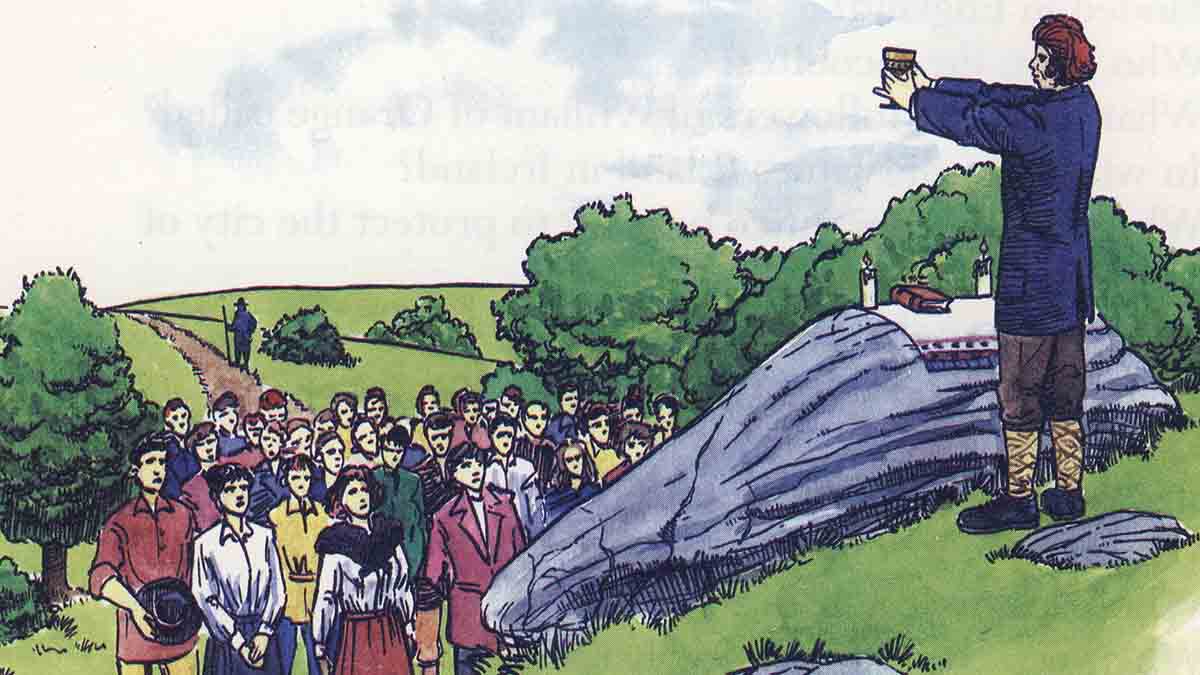By John Fitzgerald
St John’s well
A Protestant Cleric’s daughter, Dorothea Herbert, kept a diary from 1770 to 1806. One entry offers a graphic account of true religious devotion at the well: “Old Mary Neal fancied herself obligated to go on a pilgrimage for the good of her soul to Saint John’s well. She returned to her home after a long absence with a Bottle of Sanctified Water, two pairs of New Padreens (Beads) a holy cross, a dispensation and the priest’s Blessing.”
But side by side with the prayers and penance went the merry-making and carousing that provoked the wrath of one bishop after another. Johnswell had an even more infamous reputation for what the Church regarded as misconduct and unchristian revelry than almost any other Holy Well in Ireland.
 Even during Penal Times, when there was a price on the head of every catholic cleric, the bishops went out of their way to denounce unholy behaviour at the wells.
Even during Penal Times, when there was a price on the head of every catholic cleric, the bishops went out of their way to denounce unholy behaviour at the wells.
Thomas de Burgo, bishop from 1759 to 1776, issued a stern warning to revellers that they would pay a terrible price in the next world for their acts of desecration. He slammed what he called “That swarm of vagrants with their cursing, swearing, robbing, rioting, thieving, and drinking at this sacred well of St. John”.
He appealed to genuine pilgrims not to give alms to beggars at the well, threatening that such apparent charity was a grave sin. Instead, he suggested; they should drop coins in the charity box (with lock and key) that a cleric had attached to the well and the proceeds would then go to aid the poor.
Bishop de Burgo, a Dominican who admired the Spanish Inquisition, spelled out the penalties to be imposed on anyone behaving immorally at Johnswell: When such people died, there would be no Requiem Mass, their graves would be denied a church blessing, and no clergy would attend their funerals.
And that, he added, was nothing compared to what the “lad below” had in store for them.
The Bishop and his priests had to keep an eye out for Redcoats when delivering their fiery sermons at Mass Rocks near Johnswell. And worshippers who gathered to hear them also risked imprisonment or death…for the privilege of being threatened and browbeaten by their clerics!
But the merrymaking continued unabated at Johnswell. A key factor in denting the influence of the Bishop in the district was the decision of a benevolent Protestant Landlord, Miss Cheevers, to allow parts of her land to be used for Patterns.
Though a generous woman who treated her tenants fairly and humanely, unlike so many other landlords of that era, Miss Cheevers was partly motivated by a desire to aggravate a church whose teachings she found alien and unpalatable.
Ale and whiskey were sold openly from tents erected with her permission. A house on the green beside the well acquired the reputation of being the best shebeen in Ireland. The Hegarty family, and later Murphy’s, occupied it.
Cakes, apples, cheese and gingerbread were available too for the visitors, and the best fortune-tellers of the county assembled at Johnswell on Patterns days.
Bishop Troy of Ossory, who held his post from 1777 to 1786, was concerned about gatherings at Johnswell, but his pronouncements were directed more at political and protest groupings than at perceived unchristian behaviour. After excommunicating the Whiteboys of the county he sought to banish them from meeting in the vicinity of the Holy well.
In the aftermath of the 1798 uprising, the authorities were suspicious of all large gatherings. In 1804, a report filed by a James Laffan to a Government office in Dublin stated: “There was never known such a concourse of strangers as attended from the 24th June to 3rd July at St. John’s Well in County Kilkenny. Never was there a greater number of broken heads known at any former period, as all the barony bullies attended their respective factions and every evening closed with drunken quarrels.” (Picures show: Another view of St John’s well and an artist’s impression of a mass in penal times.
To be continued…

















